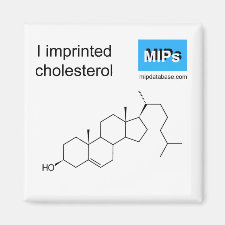
Authors: Hermánková E, Žák A, Poláková L, Hobzová R, Hromádka R, Širc J
Article Title: Polymeric bile acid sequestrants: Review of design, in vitro binding activities, and hypocholesterolemic effects.
Publication date: 2018
Journal: European Journal of Medicinal Chemistry
Volume: 144
Page numbers: 300-317.
DOI: 10.1016/j.ejmech.2017.12.015
Alternative URL: https://www.sciencedirect.com/science/article/pii/S0223523417310218
Abstract: Polymeric bile acid sequestrants (BAS) have recently attracted much attention as lipid-lowering agents. These non-absorbable materials specifically bind bile acids (BAs) in the intestine, preventing bile acid (BA) reabsorption into the blood through enterohepatic circulation. Therefore, it is important to understand the structure-property relationships between the polymer sequestrant and its ability to bind specific BAs molecules. In this review, we describe pleiotropic effects of bile acids, and we focus on BAS with various molecular architectures that result in different mechanisms of BA sequestration. Here, we present 1) amphiphilic polymers based on poly(meth)acrylates, poly(meth)acrylamides, polyalkylamines and polyallylamines containing quaternary ammonium groups, 2) cyclodextrins, and 3) BAS prepared via molecular imprinting methods. The synthetic approaches leading to individual BAS preparation, as well as results of their in-ávitro BA binding activities and in-ávivo lipid-lowering activities, are discussed
Template and target information: Review - polymeric bile acid sequestrants
Author keywords: review, Bile acid sequestrant, Pleiotropic effect, Cholestyramine, cyclodextrin, molecular imprinting



Join the Society for Molecular Imprinting

New items RSS feed
Sign-up for e-mail updates:
Choose between receiving an occasional newsletter or more frequent e-mail alerts.
Click here to go to the sign-up page.
Is your name elemental or peptidic? Enter your name and find out by clicking either of the buttons below!
Other products you may like:
 MIPdatabase
MIPdatabase









